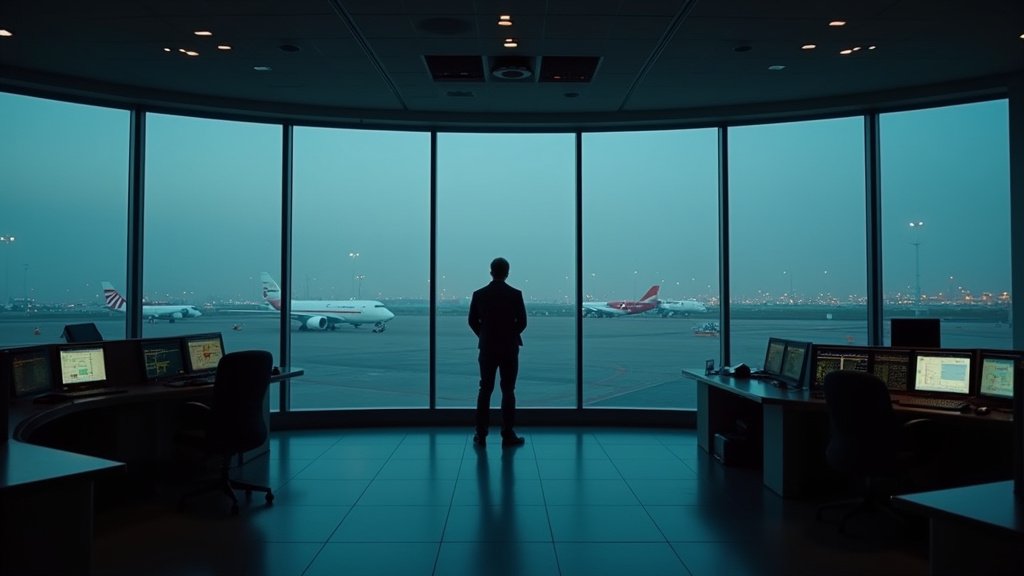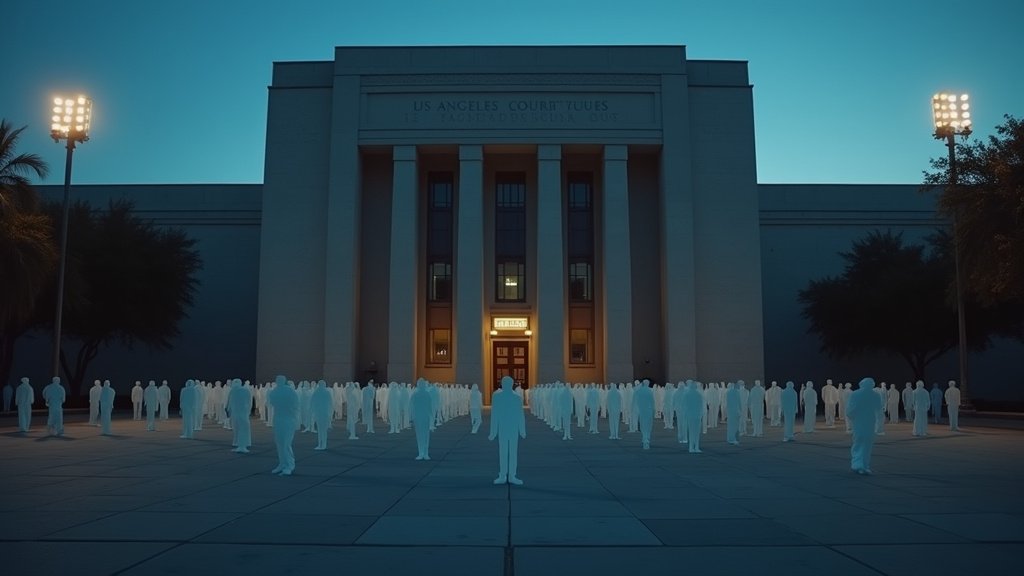Los Angeles International Airport (LAX) experienced significant operational disruptions on Saturday, October 26, 2025, when the Federal Aviation Administration (FAA) implemented a ground stop due to a critical shortage of air traffic controllers. This critical LAX flight halt, a direct consequence of the ongoing U.S. federal government shutdown, triggered widespread flight delays affecting thousands of passengers across the nation, showcasing the severe impact of an air traffic controller shortage.
LAX Grounded by Controller Shortage: The LAX Flight Halt
The FAA issued the ground stop for flights bound for Los Angeles International Airport around 8:42 a.m. Pacific Time on Saturday. This measure temporarily halted departures from airports nationwide destined for LAX, a critical LAX flight halt that lasted for approximately 1 hour and 45 minutes before the FAA lifted the order around 10:30 a.m. PT. While air traffic flow gradually resumed, the incident resulted in average delays of about 1 hour and 40 minutes for affected flights, with some passengers enduring wait times of up to 87 minutes, contributing to widespread flight delays LAX.
The Crisis Rooted in Federal Shutdown: Impact on LAX Flight Halt
The immediate cause of the LAX flight halt was a severe lack of air traffic controllers at a key Southern California air traffic control facility responsible for managing a significant portion of the region’s airspace, including LAX. This staffing crisis is intrinsically linked to the federal government shutdown, a clear example of government shutdown impact, which by October 27, 2025, had entered its 26th day. Air traffic controllers, deemed essential personnel without pay, are required to work without pay, exacerbating existing workforce shortages and leading to this significant LAX flight halt.
U.S. Transportation Secretary Sean Duffy highlighted the immense pressure on the system, noting that controllers are increasingly calling in sick due to financial stress and the demanding nature of their jobs. He revealed that on Friday, October 25, 2025, there were 22 “staffing triggers” nationwide—instances of controller shortages—one of the highest figures recorded since the shutdown began, indicating that controllers are “wearing thin”. Compounding the issue, the FAA Academy, responsible for training new controllers, remains shuttered due to the shutdown, halting the development of vital new personnel, a process that takes several years. The FAA is already approximately 3,500 controllers short of its targeted staffing levels, a deficit that led many to work mandatory overtime and six-day weeks even before the shutdown, setting the stage for the eventual LAX flight halt.
Wider Repercussions: An Aviation System Strain
The disruptions at LAX were not isolated; they represented a broader strain on the national air traffic control system. Similar staffing-related delays and ground stop programs were reported at numerous airports across the country, including Newark Liberty International Airport, Teterboro Airport in New Jersey, Southwest Florida International Airport, Oakland International Airport, San Francisco International Airport, Chicago O’Hare International Airport, and Ronald Reagan Washington National Airport. On Sunday alone, over 8,000 U.S. flights experienced delays, highlighting the overall aviation system strain.
The grounding at LAX served as a stark reminder of the air traffic control system’s vulnerabilities and the far-reaching impact of federal funding impasses on critical infrastructure. With air traffic controllers and Transportation Security Administration (TSA) officers among the roughly 13,000 controllers and 50,000 TSA officers working without pay, the situation highlights the precarious state of operations, a direct contributor to LAX operational disruptions.
Implications for Travelers and the Aviation Industry
For passengers, the consequences were immediate and frustrating. Thousands were stranded at departure airports, facing prolonged delays, missed connections, and the uncertainty of travel plans, all stemming from the LAX flight halt. Airlines such as Delta, United, American Airlines, and Southwest reported significant impacts on their schedules and networks due to the FAA ground stop.
The ongoing shutdown also raises concerns about the long-term stability and safety of the air traffic control system. The FAA has warned that disruptions are likely to intensify as the shutdown continues and controllers miss further paychecks, potentially leading to more widespread delays and cancellations. The closure of the FAA Academy and concerns about trainee retention further complicate efforts to address the chronic staffing shortage, increasing the likelihood of future LAX flight halt events.
Looking Ahead
While operations at LAX largely returned to normal following the ground stop, the underlying issues persist. The fragility of the U.S. air traffic control system has been laid bare, underscoring the urgent need for a resolution to the federal government shutdown to restore full operational capacity and prevent further significant disruptions to air travel across the United States. Travelers are advised to monitor real-time flight updates and remain flexible as the situation remains volatile, with the potential for another LAX flight halt.





